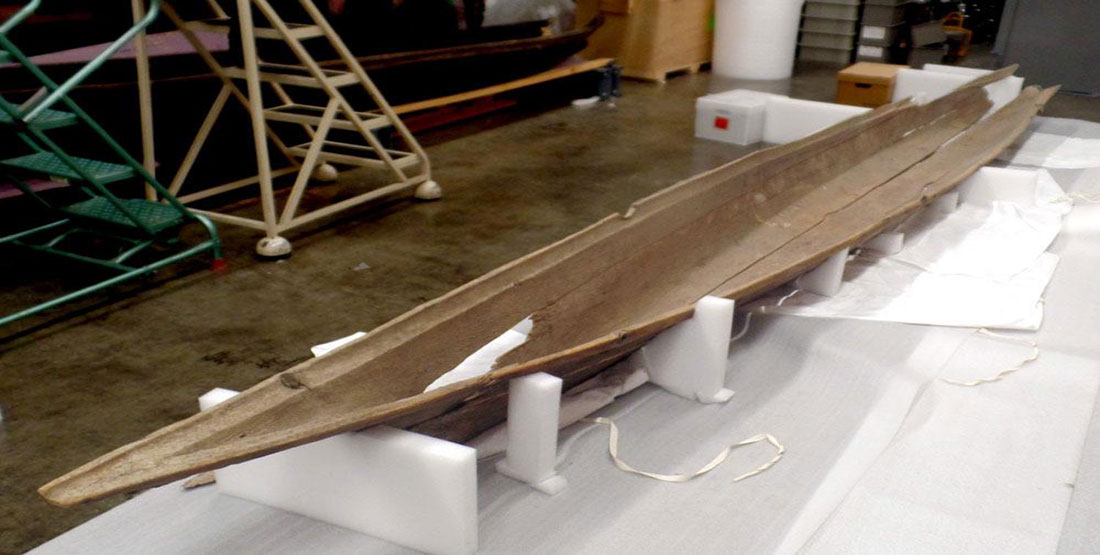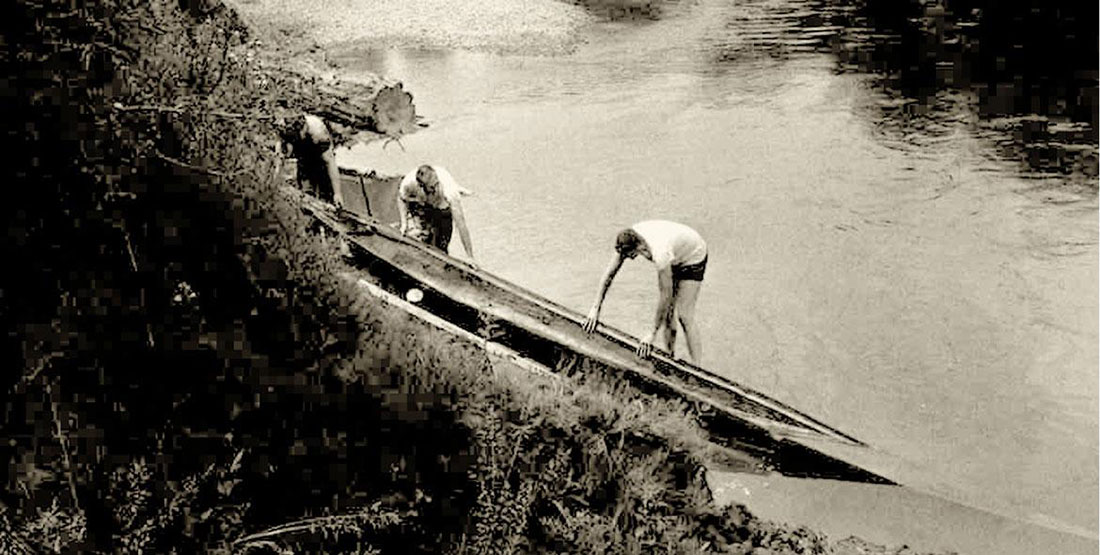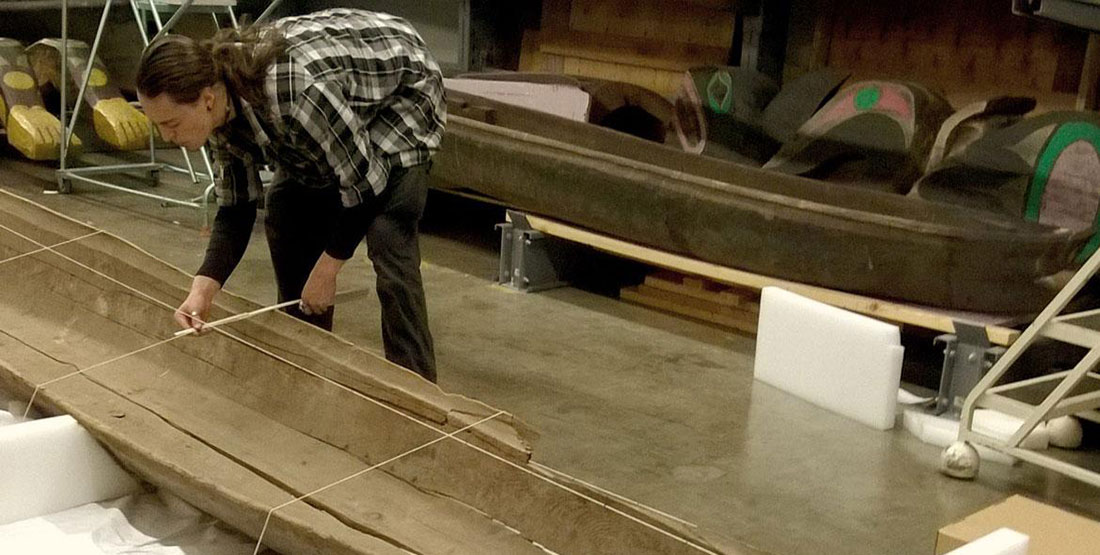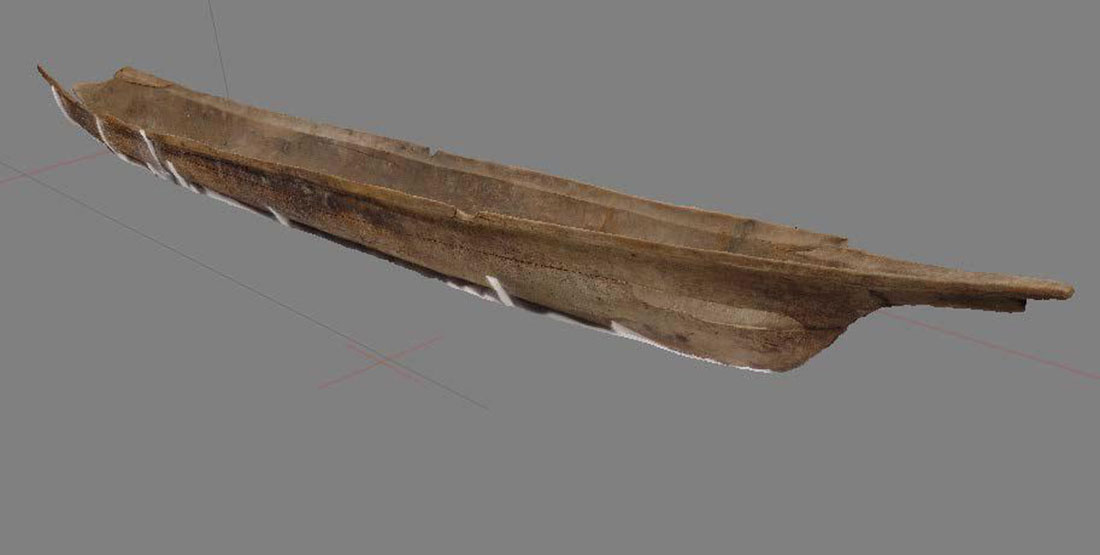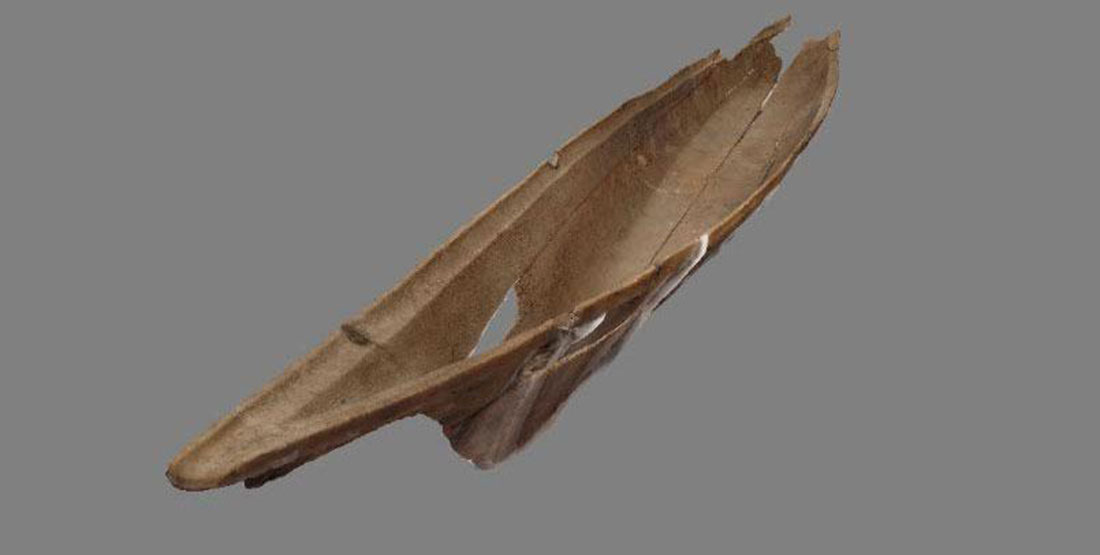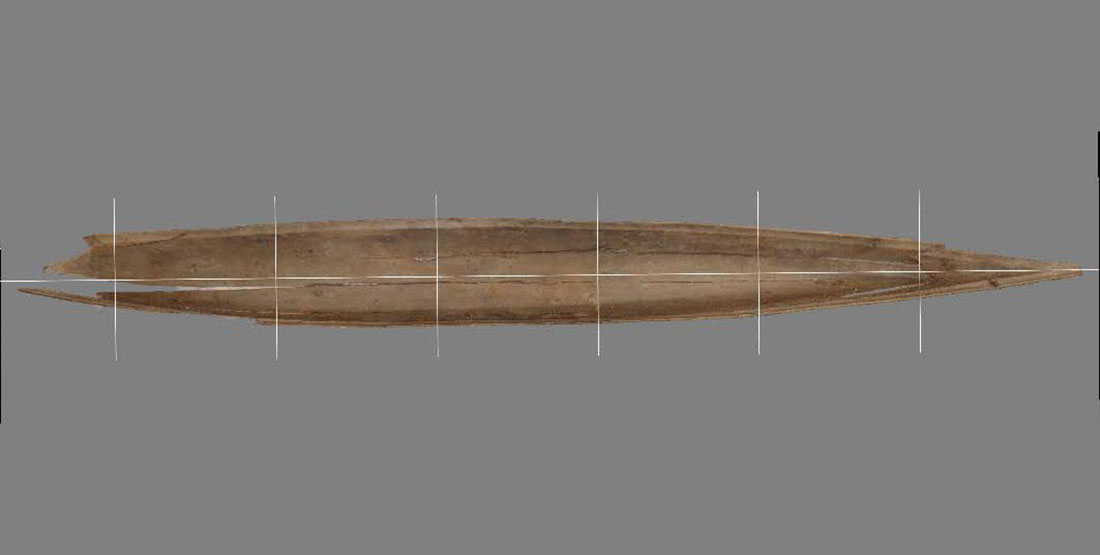Cultural staff from the Burke Museum and Muckleshoot Indian Tribe have launched a new project to study this rare type of canoe made and used by Coast Salish peoples for hunting, fishing and travel in rivers and estuaries. This collaborative research highlights important aspects of local canoe traditions, specialized technologies adapted for the Pacific Northwest’s extensive inland river systems, and the continuing deep cultural connections to these places.
With the help of a grant from Traditional Small Craft Association’s John Gardner Fund, the team of experts, including archaeologists, tribal historians and carvers, will stabilize and document the canoe, as well as attempt to get a radiocarbon date to determine its age. With additional funding, the team hopes to carve a replica.
In spring 2016, Nathan Garcia of the University of Southern Denmark recorded the hull shape and construction details, and compared the canoe with examples from all corners of the globe. He found that the low, narrow and long hull have been well adapted to fast travel in calm river environments without big waves, though at the expense of rapid turning ability, which may not have been a problem in the wider lower sections of the Green and Duwamish rivers.
Garcia used special software to stitch together hundreds of photos to create a digital 3-D model. Using a 3-D printer, the Burke has printed out models of the canoe that people can hold.
In fall 2016, a group of experts spent a day examining of the canoe and taking samples of wood for analysis. The group included George Swanaset Sr., master canoe carver from the Nooksack Indian Tribe, who shared his detailed observations about the type, age, and historical repairs of the s.dəxʷìł.
He pinpointed some typical repair techniques such as the fiber stitching that was reinforced by wooden plugs. He also noted some unique aspects of the canoe—like its unusually thin walls, style of the gunwale (top edge of the side), and the unusually high number of natural knots. His expertise is critical to understanding the construction of the canoe, building a proper cradle to support it, and carving a replica in the later phase of this project.
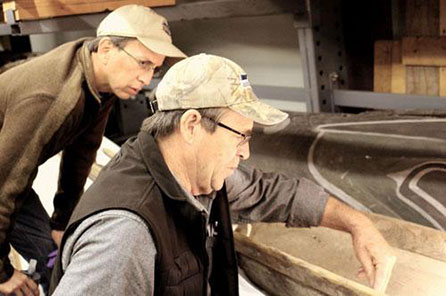
George Swanaset and Warren King George inspect the canoe. They notice a plug and stich technique for repairing canoes that was commonly used in the past.
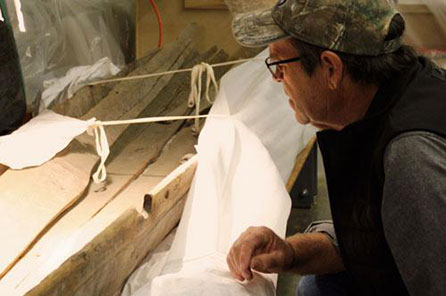
George Swanaset notices the gunwale is unusual. Perhaps it is the signature of a particular carver, or local style.
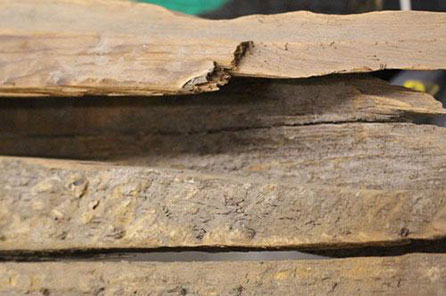
Close up of plug and stich technique. A thin piece of fiber was used for the stitching cracks and then plugged with small pegs of spruce to keep the stitches from slipping.
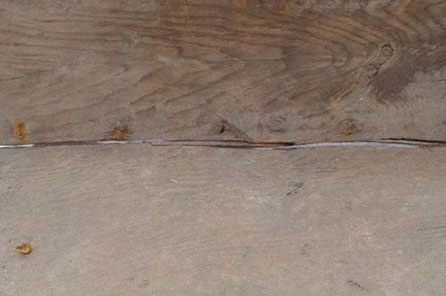
Iron nails were also used to repair cracks in the hull. This canoe is an interesting mix of traditional and introduced repair methods.
Guided by George Swanaset’s expertise, Dr. Jennie Shaw, specialist in wood and plant identification from archaeological sites (and UW PhD), took small wood and fiber samples from the canoe for tree species identification and radiocarbon dates. George helped Jennie determine the part of the canoe that contained the outermost tree rings, as these will give an age closest to when the tree was cut down. She will identify wood and fiber types using microscopic analysis, and then samples will be sent to a radiocarbon dating lab to find out the age of the hull wood and the age of the repairs.
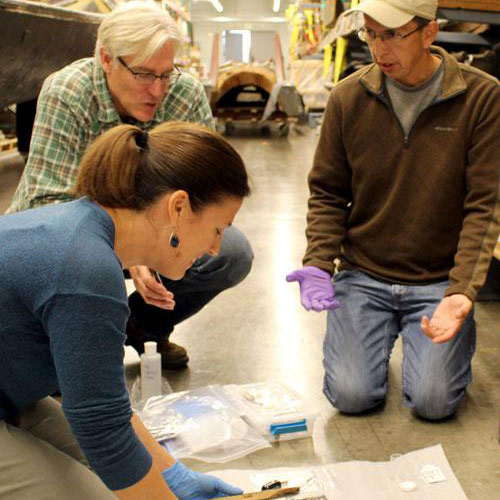
Dr. Jennie Shaw carefully takes a small wood sample for radiocarbon dating of the canoe.
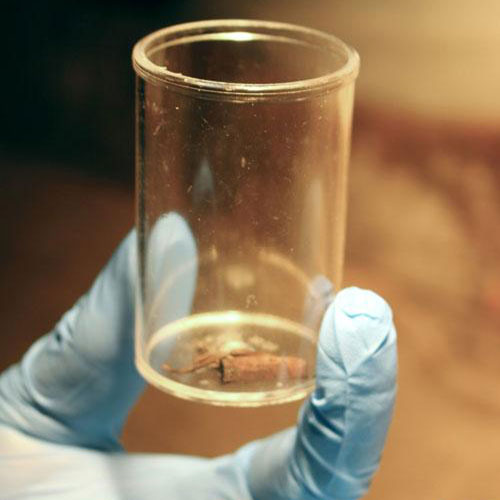
A close up of the wooden plug that will be used for radiocarbon dating.
Continue reading: "Launching the Coast Salish s.dexiA canoe."
Learn more about the cultural collections at the Burke Museum and read more from our archaeology team.
Support for this project comes from 4Culture.
